Pashupatinath Temple
₹ 1,098 onwards
View Kathmandu PackagesWeather :
Label : Top Attraction
Tags : Temple
Timings : Temple Timings 4:00 AM - 12:00 PM and 5:00 PM - 9:00 PM
Inner Temple Courtyard: 4:00 AM - 7:00 PM
Sanctum Sanctorum: 5:00 AM - 12:00 PM (Morning) 5:00 PM - 7:00 PM (Evening)
Apart from Abhisheka time, devotees can worship from all the four entrances from 9:30 AM - 1:30 PM
Entry Fee : NPR 1000 for Foreign and SAARC Nationals
Free for Indian and Nepali Nationals
Planning a Trip? Ask Your Question
Pashupatinath Temple, Kathmandu Overview
One of the holiest Hindu shrines in Nepal, the Pashupatinath Temple is a UNESCO World Heritage Site and a Shaktipeetha. It consists of 518 small temples and a main pagoda house. The temple complex is only open to Hindus. It is believed that the Jyotirlinga housed in the Pashupatinath temple is the head of the body, which is made up of the twelve Jyotirlinga in India.
It is stretched across both the banks of the beautiful and sacred Bagmati River on the eastern fringes of the capital city of Kathmandu. The magnificent sanctum devoted to Lord Shiva draws in thousands of devotees who come to offer their prayers and seek blessings from him. In 1979, the magnificent temple was declared a UNESCO World Heritage Site.
Read More on Pashupatinath Temple
Best Time To Visit Pashupatinath Temple
Legend of Pashupatinath Temple - This Legend or That?
There is something about the Hindu faith that is simply undeniable. Whether you are a believer or a sceptic, the legends and stories behind the establishment of a shrine are always enthralling. In the same way, the Pashupatinath Temple has many legends attached to its existence.
The Cow's Tale
As this legend goes, Lord Shiva and Goddess Parvati once transformed themselves into antelopes and visited the dense forest on the eastern bank of the Bagmati River. Enamoured with the beauty of the place, Lord Shiva decided to stay back as a deer. The other deities soon came to know of his mischief and pestered him to resume his divine form by gripping one of his horns, which broke in the process. This broken horn used to be worshipped as a Shivalinga but was buried and lost after a few years. Several centuries later, a herdsman found one of his cows showering milk on the site. Astonished, he dug deep into the site only to find the divine Shivalinga.
The Legend of the Lichchavi
According to Gopalraj Aalok Vamsavali, the oldest chronicle of Nepal, the Pashupatinath Temple was constructed by Supushpa Deva, one of the Lichchavi rulers who ruled way before King Manadeva.
The Devalaya Discourse
Another story that has come down from generations is that the Pashupatinath Temple was already present in the form of a linga shaped Devalaya before Supushpa Deva's arrival. He constructed a five-storey temple for Lord Shiva on that spot. As days rolled by, the necessity for the renovation of the holy shrine arose, before it was finally reconstructed by King Shivadeva. Later, King Ananta Malla added a roof to it.
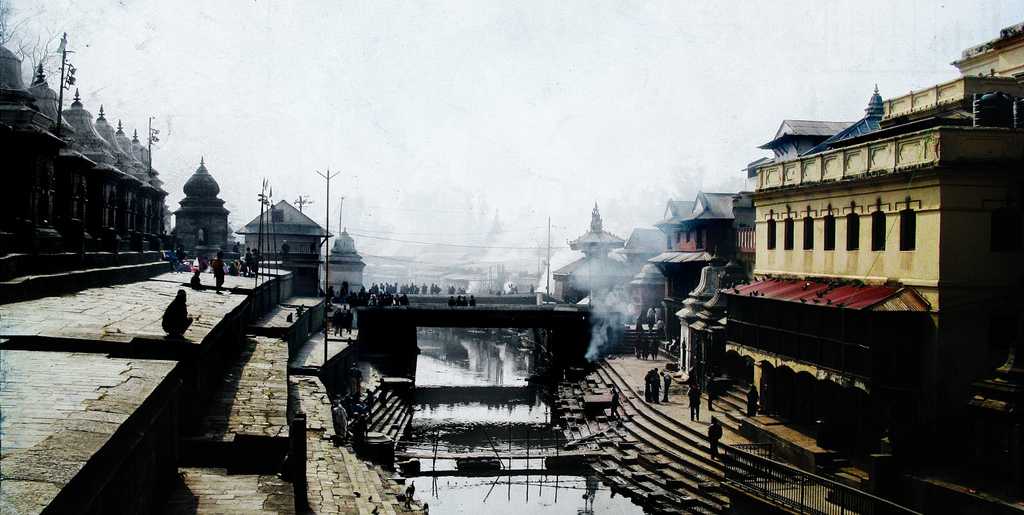
Architecture of Pashupatinath Temple
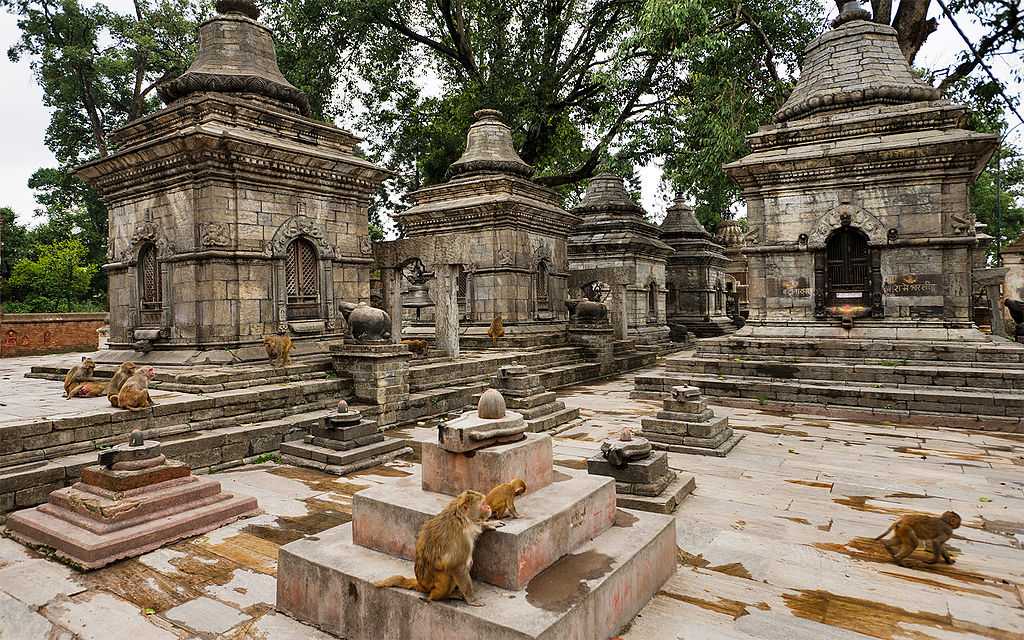
The main complex of the Pashupatinath Temple is constructed in the Nepalese pagoda architectural style. From cubic constructions to intricately carved wooden rafters, all the features cater to this particular form. The roofs are made of copper and are gilded with gold, while the main doors are coated with silver. The magisterial temple houses a gold pinnacle, known as Gajur, and two Garbhagrihas. While the inner garbhagriha is home to the idol of Lord Shiva, the outer area is an open space that resembles a corridor. The prime attraction of the temple complex is the sizable golden statue of Lord Shiva's vehicle - Nandi the bull.
The Sacro Sanctum
Bound with a serpent covered in silver, the prime deity is a Mukhalinga made of stone which rests upon a silver yoni base. The Shiva Lingam is one metre high and has four faces in four directions, each representing a different aspect of Lord Shiva, namely - Sadyojata or Varun, Tatpurusha, Aghora, and Vamadeva or Ardhanareeswara. Another imaginative face of Ishana is believed to point towards the Zenith. Each face is said to represent the five primary elements, which include air, earth, ether, fire, and water. Tiny hands protrude out from each face and are shown to be holding a kamandalu in the left hand and a rudraksha mala in the right. The idol is decked in golden attire, or vastram.
Priests of Pashupatinath
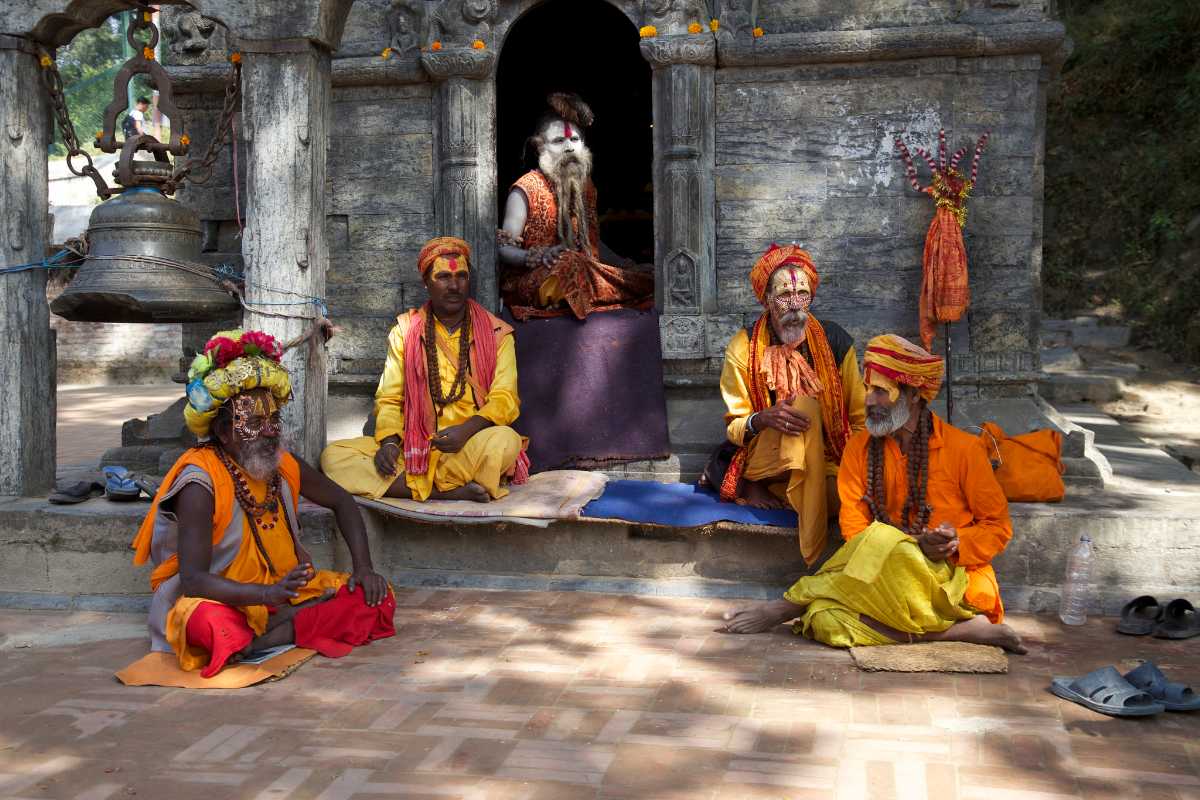
The most extraordinary feature of the Pashupatinath Temple is that the main idol can be touched only by four priests. Two sets of priests carry out the daily rites and rituals in the temple, the first being the Bhandari and the second being the Bhatt priests. The Bhatt are the only ones who can touch the deity and perform the religious rites on the idol, while the Bhandaris are the caretakers of the temple.
Tips
- Be careful of the monkeys as they tend to cause mischief by snatching food and belongings.
- It costs about NPR 1000 for hiring a guide who will walk you through the temple complex and tell you about the traditions and rituals of the Pashupatinath Temple.
A Journey to The Afterlife
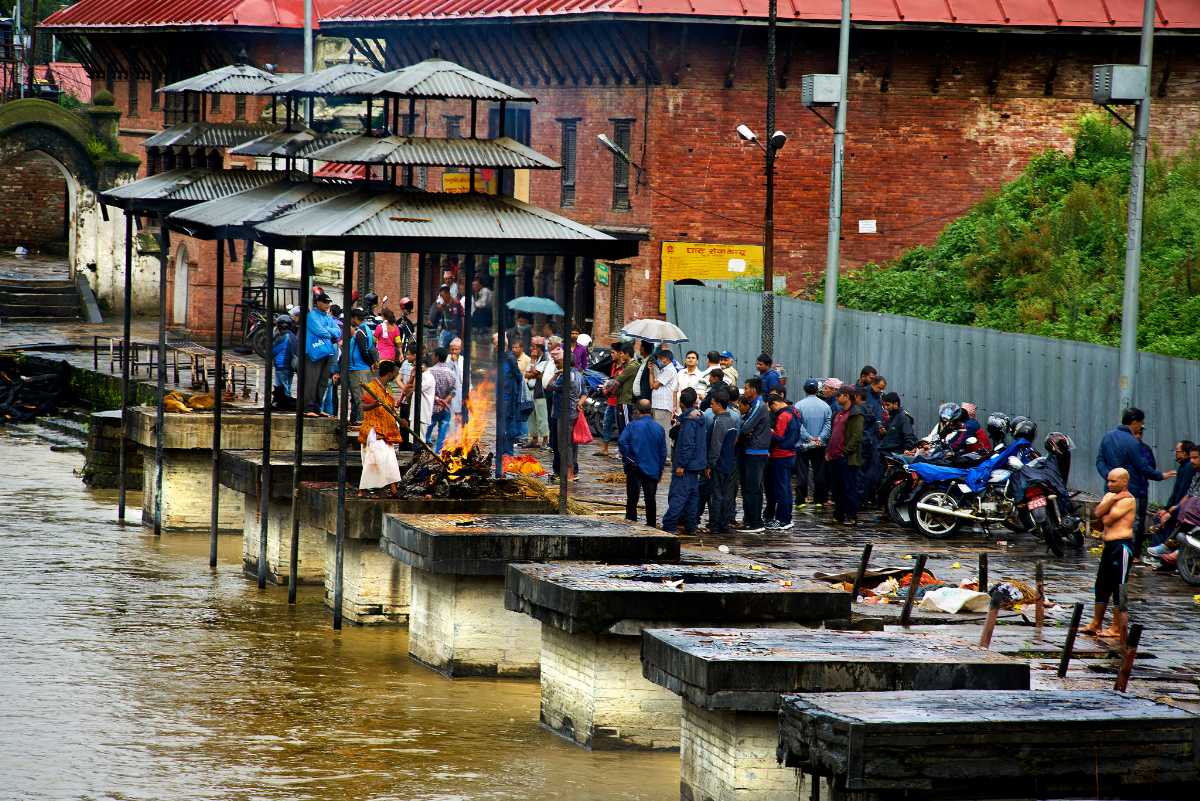
The holy place of worship is especially thronged by the elderly, who look for shelter during the twilight days of their lives, and breathe their last in peace, knowing that they will be cremated at the riverbank, from which they can begin a new journey with the flowing river and travel wherever the current takes them. Hindus from every nook of the country wish to meet death at this place since it is believed that those who die in the temple are reincarnated as human beings, and all the misconducts of their previous lives are forgiven. Astrologers line along the temple waiting to bless the visitors in exchange of a nominal fee and upon being asked, predict the exact day a person is going to die. The Pashupatinath Temple is blanketed with a special atmosphere of death, the phenomenon being the centre of almost every ritual performed in the premises.
Pashupatinath Temple Abhishekam
All four doors are opened from 9:00 AM to 11:00 PM, which is the Abhisheka time in the temple. It is only during this period when all the four faces of the Shiva Lingam are visible to the devotees.
Note: A person can purchase the basic Abhishekam ticket from the counter at the entrance for NPR 1100. This covers various pujas including the Rudrabhisheka. The Abhisheka is performed depending on the direction from which the face of the deity is viewed. For instance, if the ticket says east, then one needs to join the queue in front of the eastern entrance so that the priest can perform the Abhisheka of the eastern face of the Shivalinga.
Entry to the Pashupatinath Temple
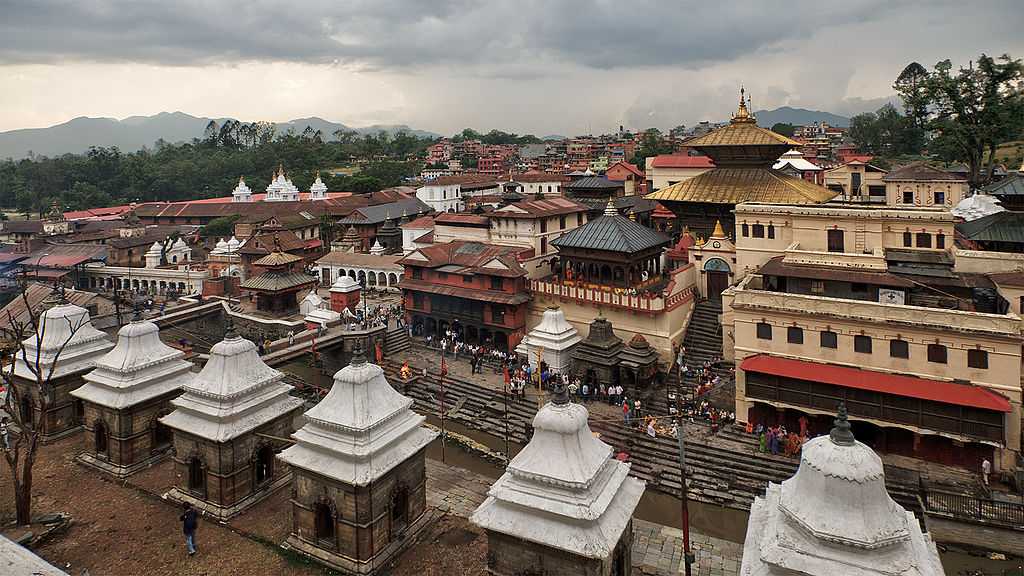
The holy sanctuary houses four entrances in the four geographical directions. The main entrance is situated in the west and is the only one that is opened daily while the other three remain closed except during festival periods. The Practising Buddhists of the Nepali Diaspora and the Practising Hindus are only permitted to enter the temple courtyard. The Practising Hindus who have descended from the west, along with other non-Hindu visitors, save the Jain and Sikh communities with Indian ancestry, are not permitted to enter the temple complex. The others are allowed to have a glimpse of the main temple from the adjacent bank of the Bagmati River and are charged a nominal fee to visit the plethora of smaller temples that adorn the external premises of the Pashupatinath temple complex. No devotee is allowed to step into the innermost Garbhagriha. However, they are allowed to see the idol from the premises of the outer sanctum.
How To Reach Pashupatinath Temple
Top Hotel Collections
Top Hotels Near Pashupatinath Temple
Pashupatinath Temple Reviews

Have a Question on Pashupatinath Temple?

experience.